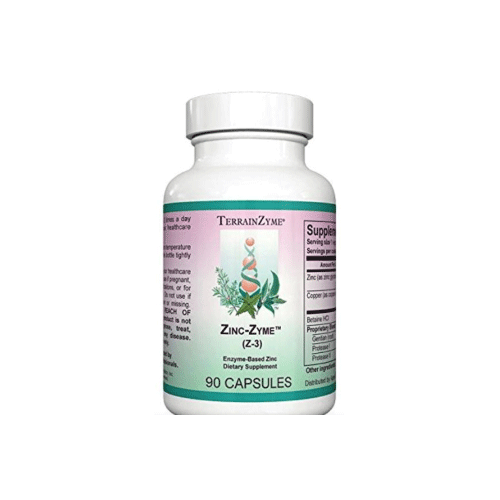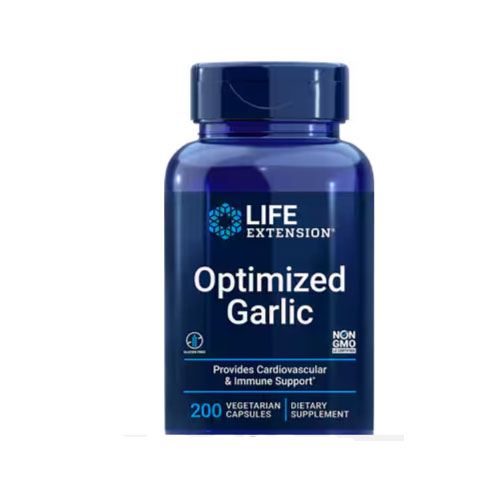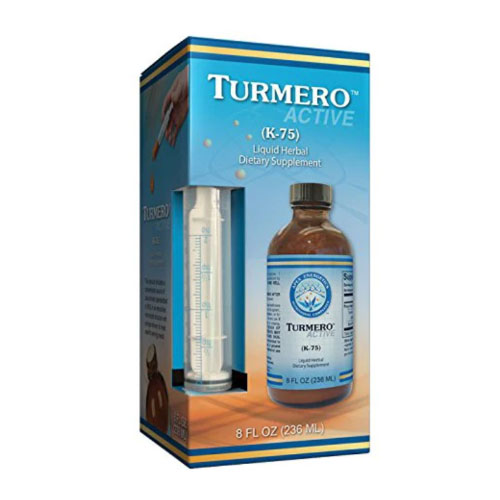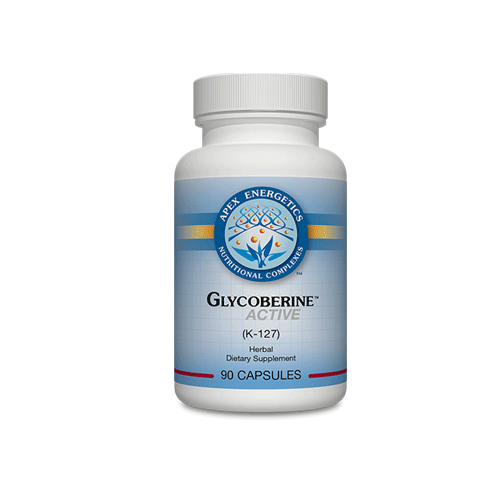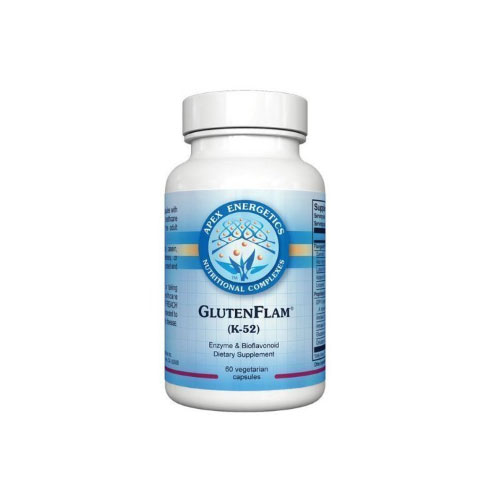By William Clearfield, DO HMD FAAFRM DABMA FAAMA
“The only way to keep your health is to eat what you don’t want, drink what you don’t like, and do what you’d rather not do.” — Mark Twain.
“A-G-E and O-L-D are four-letter words. We prefer “mature.”— Dr. Bill Clearfield.
A-g-e-ing is inevitable. But what is the difference between one who matures gracefully, with a twinkle in their eye and a zest for life, and one who devolves into a fat, toxic, miserable dumpster fire of disease? Why do some people have the drive and energy to live life to the fullest while others with the same abilities, skills, and intelligence devolve into bitter, angry old geezers?
Persons with purpose, peace, and passion age gracefully, preserving health and vitality as they mature. Natural processes, declining physical abilities, cognitive function, and overall well-being often bring challenges. However, those who seek scientific advancements and lifestyle factors show that aging doesn’t equate to a diminished quality of life. With a game plan and proven strategies, you can extend your lifespan and enhance the quality of your years, ensuring you remain filled with energy, purpose, and joy.
This comprehensive guide explores seven essential habits that support well-being and a healthier life into your eighties, nineties, and even at one hundred years of age. From maintaining physical activity to fostering solid social connections, these traits form the foundation of a lifestyle designed to help you thrive well into your golden years.
As a bonus, we will delve into three promising interventions representing the frontier of longevity science. These include the cutting-edge supplements trans-resveratrol, known for its antioxidant properties and ability to activate longevity-related genes, and cyclodextrin, which promotes cellular health and reduces the risk of age-related diseases. Lastly, we discuss the intriguing potential of rapamycin, which mimics the life-extending effects of caloric restriction by modulating critical cellular pathways.
Take control of your future today. Embrace these strategies to extend your life and enhance the quality of every moment. Prioritize your physical, mental, and emotional well-being to start living better, not just longer. It is only too late to act when they throw dirt over you. Make a choice now to add life to your years and experience the vitality and fulfillment you deserve throughout your journey.
7 Habits to Cultivate to Live a Longer, Healthier Life
1. Stay Physically Active
Regular physical activity is the most powerful way to maintain health as we age. Exercise strengthens the heart, muscles, and bones while enhancing mental acuity and mood. Physical activity:
- Reduces feelings of depression and stress while improving mood and overall emotional well-being
- Improves sleep
- Empowers a feeling of “I’m in control of my ”
Exercise and physical activity improve and maintain “executive function,” such as the ability to start projects, finish projects, multitask, plan activities, and ignore irrelevant information.
Exercises for mood elevation:
- Walking, bicycling, or dancing are endurance These activities increase one’s breathing, get one’s heart pumping, and boost chemicals in one’s body that improve mood.
- Yoga is a mind and body practice that typically combines physical postures, breathing exercises, and relaxation.
- Tai Chi is a “moving meditation” that involves shifting the body slowly, gently, and precisely while breathing deeply.
- Choosing activities you enjoy, whether gardening, playing tennis, kicking a soccer ball with your grandchildren, or something Choose an activity you want to do, not one you must do. (1-2)
2. Eat a Balanced Diet (3-5)
A diet rich in fruits, vegetables, whole grains, lean proteins, and healthy fats promotes longevity. These foods deliver essential nutrients your body needs to function at its best. Fruits and vegetables offer abundant vitamins, minerals, and fiber necessary to maintain overall health.
Whole grains provide sustained energy and support digestive health, while lean proteins maintain and repair muscles as you age.
Beyond supplying essential nutrients, this diet actively combats inflammation and oxidative stress. Antioxidants in these foods neutralize harmful free radicals, preventing cellular damage that leads to heart disease, cancer, and dementia-type diseases. Phytochemicals in plant-based foods offer protective benefits that enhance your body’s ability to fight disease and maintain optimal health.
The Mediterranean diet emphasizes fruits, vegetables, whole grains, lean proteins, and healthy fats. It consistently delivers impressive health benefits. Research indicates that this dietary pattern reduces mortality risk and increases life expectancy. The Mediterranean Diet goes beyond heart health to support brain function and preserve cognitive abilities. It enhances physical health and vitality, making it a powerful strategy for a longer, healthier life.
3. Prioritize Sleep (6-13)
Quality sleep is a foundational pillar of health and crucial in maintaining overall well-being. However, sleep is anything but restful. During sleep, the body engages in essential repair processes that restore and rejuvenate various systems. Deep sleep facilitates tissue growth and muscle repair. REM sleep supports brain function and emotional regulation.
Sleep plays a crucial role in hormone production. In particular, sleep releases growth hormone, which regulates executive function and the ability to get things done. Sleep regulates cortisol, the “juice” necessary to manage stress and inflammation. Sufficient sleep supports the body’s ability to heal, grow, and maintain balance.
The impact of chronic sleep deprivation on health is profound and well-documented. Insufficient sleep is directly linked to an increased risk of obesity. Sleep deprivation disrupts the hormones that control hunger and appetite, leading to overeating and weight gain.
Sleep disturbances significantly elevate the risk of cardiovascular disease by contributing to higher blood pressure, inflammation, and arterial stiffness.
A lack of sleep impairs the immune system, making the body more susceptible to infections and reducing its ability to fight illness effectively. Ensuring enough sleep protects you from serious health issues and enhances overall resilience.
Experts universally recommend 7-9 hours of restful sleep per night to achieve optimal health and longevity. Achieving quality sleep requires attention to sleep hygiene practices. Sleep hygiene involves creating an environment and routine conducive to restful sleep. Maintaining a consistent sleep schedule by going to bed and waking up at the same time each day regulates the body’s internal clock, making it easier to fall asleep and wake up refreshed. Incorporating a relaxing bedtime routine, such as reading, a warm bath, or practicing mindfulness, signals the body that it’s time to unwind and prepares it for a deeper, more restorative sleep. Adopting these practices enhances sleep quality, supporting overall health and longevity.
4. Manage Stress (14-22)
Chronic stress exerts a profound and far-reaching impact on health. Chronic stress significantly elevates the risk of chronic conditions such as heart disease, obesity, and mental health disorders. When you encounter stress, your body releases cortisol, the “fight or flight” hormone.
In short-term stressful situations, cortisol helps the body manage effectively by increasing available energy. Short-term “good stress” enhances focus while diverting resources (energy) from non-essential functions like digestion and immune responses to our central core to care for emergencies.
When stress becomes chronic, cortisol levels remain persistently high, damaging many organ systems, particularly the cardiovascular system. Prolonged exposure to elevated cortisol levels contributes to hypertension, as long-term exposure causes blood vessels to constrict.
Chronic stress raises cholesterol levels by releasing fatty acids into the bloodstream. The liver reacts by converting LDL cholesterol—the so-called “bad” cholesterol—into low-density lipoprotein (LDL) cholesterol, leading to arterial plaque buildup. Plaque formation narrows the arteries and increases the risk of heart disease, heart attacks, and strokes.
Stress-induced cortisol encourages fat storage, particularly in the abdominal area. Trunkal, abdominal, or visceral fat is a known risk factor for metabolic disorders and obesity. Addressing chronic stress is essential for protecting the heart and preventing severe health conditions.
Beyond the cardiovascular system, chronic stress triggers a cascade of inflammatory responses, weakening the immune system and increasing one’s susceptibility to infections and chronic disease. When cortisol levels are high, the body’s ability to regulate inflammation is compromised. Usually, cortisol controls inflammation by suppressing the immune response.
However, when cortisol levels are chronically elevated, the body’s regulatory mechanisms become dysregulated, leading to persistent low-grade inflammation linked to various health issues. Autoimmune diseases, gastrointestinal disruptions, recurrent infections, skin diseases, and even cognitive decline and dementia are examples of stress-induced chronic diseases.
Effective stress management involves incorporating regular activities into your daily routine. These activities lower cortisol levels and restore balance to both mind and body. Practices such as meditation and deep breathing exercises reduce stress by activating the parasympathetic nervous system, the counterpart to the “fight or flight” response.
Meditation reduces cortisol production, decreases anxiety, and improves overall emotional well-being. Deep breathing exercises are slow, controlled breaths that lower heart rate and reduce blood pressure, alleviating stress’s physiological effects.
Engaging in hobbies and activities that bring joy and fulfillment is critical to managing stress. Whether it’s spending quality time with loved ones, pursuing creative endeavors like painting or writing, or participating in physical exercises such as yoga or hiking, these activities provide an outlet for stress and contribute to a sense of purpose and satisfaction.
The American Psychological Association emphasizes that proactively managing stress is vital for maintaining physical and mental health and leads to a healthier, more balanced life. By prioritizing stress management, you protect yourself from the harmful effects of chronic stress and enhance your quality of life and long-term well-being.
5. Foster Social Connections (23-28)
Strong social connections profoundly impact longevity and overall health. Developing and maintaining a supportive network of family and friends enhances emotional well-being directly by providing a sense of belonging, security, and unconditional support. Close relationships serve as a protective barrier against life’s inevitable challenges, reducing stress and mitigating the risk of anxiety, depression, and other mental health disorders.
When a caring and supportive network surrounds you, you experience higher happiness and satisfaction. Positive social interactions trigger oxytocin, the ‘love’ hormone that promotes feelings of contentment and reduces stress. Oxytocin’s effect leads to lower blood pressure, improved cardiovascular health, and increased life satisfaction.
But wait! There’s more! Social connections go beyond emotional support. They play a critical role in physical health and longevity. Loneliness and social isolation are among the most significant predictors of early mortality, particularly in older adults. Individuals who lack strong social connections face heightened risks of chronic health conditions such as heart disease, hypertension, and a weakened immune system. Socially isolated individuals are more likely to develop cognitive decline and have significantly reduced quality and “quantity” of life.
Actively engaging in community activities, maintaining regular contact with loved ones, and cultivating meaningful relationships are proven strategies for promoting longevity and overall well-being. Participating in community events, volunteering, and joining social clubs builds connections while strengthening existing relationships. Regular interactions with family and friends, whether through face-to-face visits, phone calls, or virtual meetups, keep bonds strong and provide consistent emotional support. Moreover, investing time in meaningful relationships, characterized by mutual respect, trust, and affection, leads to a deeper, enriched life. Investing time in relationships fosters a sense of purpose and fulfillment.
Those prioritizing relationships and familial connections actively create robust social networks supporting mental and physical health.
6. Keep Your Mind Active (29-34)
Consistently challenging your mind with stimulating activities is vital for preserving and enhancing cognitive function. Activities such as reading, solving puzzles, and acquiring new skills drive neuroplasticity—the brain’s remarkable capacity to form new connections and reorganize itself throughout life. Persistent mental engagement fortifies existing neural pathways and promotes the growth of new ones, which is crucial for maintaining memory, attention, and problem-solving skills. Moreover, regular mental challenges enhance your brain’s adaptability, responsiveness to new information, and overall cognitive vigor.
Intellectually stimulating conversations enhance cognitive function as seniors use critical thinking and analytical skills. Discussions that demand considering different perspectives, debating ideas, and articulating thoughts stimulate the brain and strengthen neural connections.
The social aspect of mental stimulation sharpens cognitive abilities and promotes emotional well-being by fostering a sense of connection and community. Regular, meaningful interactions with others reinforce memory retention and improve complex information-processing skills.
These interactions reduce the risk of cognitive decline and keep your mind active as you age.
Lifelong learning and embracing mental challenges significantly reduce the risk of developing neurodegenerative diseases such as Alzheimer’s and Parkinson’s Disease. Individuals who engage in continuous learning and mentally demanding activities experience a slower rate of cognitive decline than those who do not. Incorporating mental exercises into your daily routine, such as solving crosswords, playing strategic games, or learning a new language, provides the ongoing stimulation necessary to support brain health and enhance overall quality of life. By prioritizing these mental challenges, you actively invest in your cognitive well-being, maintaining high mental acuity and resilience.
7. Avoid Harmful Habits (35-42)
Avoiding harmful habits, smoking, excessive alcohol consumption, and substance abuse directly contributes to a longer, healthier life. Smoking, in particular, is a leading cause of preventable death. Smoking dramatically increases the risk of lung cancer, heart disease, and stroke. Toxic chemicals in cigarettes damage and impair lung function, leading to chronic obstructive pulmonary disease (COPD) and other respiratory conditions. Smoking accelerates the hardening and narrowing of arteries, raising the risk of heart attacks and strokes. Smoking cessation reduces these risks, improves lung function and circulation, and decreases the likelihood of developing cancers.
Excessive alcohol consumption poses serious health risks. Liver disease, cardiovascular issues, pancreatitis, and neurodegenerative diseases are just the tip of alcohol’s destructive sphere of influence. Chronic alcohol abuse directly leads to life-threatening alcoholic hepatitis, cirrhosis, and liver cancer. Excessive drinking elevates blood pressure, weakens the heart (cardiomyopathy), and increases the risk of heart failure and stroke.
Reducing or eliminating alcohol intake safeguards the liver and pancreas, fortifies the heart, and protects the brain. This proactive approach prolongs and enhances quality of life.
Substance abuse, including the misuse of prescription medications and the use of illegal drugs, profoundly impacts both physical and mental health. Substance abuse weakens the immune system, increases the risk of infectious diseases, and contributes to the development of mental health disorders such as anxiety, depression, and psychosis. The physical toll of substance abuse includes damage to the cardiovascular and respiratory systems and an increased risk of overdose, which can be fatal. By avoiding substance abuse and seeking help when needed, you actively invest in your health, ensuring a longer, healthier life marked by mental clarity, physical vitality, and emotional well-being.
Interventions for Longevity
1. Trans-Resveratrol (43-50)
Trans-resveratrol, a powerful polyphenol found in the skin of red grapes, blueberries, and other nutrient-rich plants, is recognized as a highly effective anti-aging compound. It protects cells from a significant contributor to the aging process: oxidative damage, also known as oxidative stress. Unlike the more common cis-resveratrol, trans-resveratrol is a biologically stable and potent isomer, making it the superior choice for those seeking optimal health benefits.
Oxidative stress occurs when harmful free radicals overwhelm the body’s natural defenses, leading to cellular damage, inflammation, and the development of chronic diseases.
Trans-resveratrol effectively neutralizes free radicals, reducing inflammation and preventing the (cellular) wear and tear of aging. This protective action extends from the skin to vital organs, significantly lowering the risk of cardiovascular, respiratory, metabolic, and reproductive diseases. Incorporating trans-resveratrol into a daily routine is a proactive measure to safeguard the body from the damaging effects of oxidative stress.
Trans-resveratrol is critical in generating sirtuins, a group of proteins related to longevity and cellular health. Sirtuins, especially SIRT1, regulate essential cellular processes, including DNA repair, metabolism, and aging. By activating SIRT1, trans-resveratrol supports the body’s natural repair mechanisms, helping cells maintain their integrity and function optimally.
Activated SIRT1 enhances cell energy production, improves organ function, reduces oxidative stress, and improves metabolic health. Trans-resveratrol’s ability to mimic the effects of caloric restriction—known for extending lifespan in various organisms—without drastic dietary changes makes it an ideal option for promoting healthy aging and extending lifespan naturally.
Longevinex’s trans-resveratrol stands out as an exceptional choice. The Longevinex formula maximizes bioavailability, allowing the body to absorb and utilize trans-resveratrol more effectively. What sets Longevinex apart is the inclusion of cyclodextrin, a sugar-derived molecule that enhances the stability and absorption of the entire compound, further amplifying Longevenix’s health benefits. Regular supplementation with Longevinex supports healthy aging by improving cellular function, protecting against age-related diseases, and promoting overall vitality. By incorporating Longevinex into a wellness routine, you are proactively taking steps to influence the aging process, ensuring a longer life and better health and vitality throughout the journey.
2. Cyclodextrin (51-56)
Cyclodextrin is a cyclic oligosaccharide derived from the enzymatic conversion of starch. Researchers widely recognized cyclodextrin’s ability to form inclusion complexes with hydrophobic molecules. Cyclodextrin’s unique molecular structure improves the solubility and stability of otherwise poorly soluble compounds, making it a valuable excipient in
pharmaceutical and nutraceutical formulations. Cyclodextrin’s ability to enhance drug bioavailability is critical in oral and topical delivery systems, contributing to its widespread use in therapeutic interventions.
Cyclodextrin plays a vital role in cardiovascular health by facilitating the removal of excess cholesterol from cells. It interacts with cholesterol molecules, extracting them from lipid-laden cell membranes and promoting excretion. This process significantly reduces cholesterol buildup, which directly mitigates the formation of atherosclerotic plaques in arteries. Cyclodextrin directly prevents age-related cardiovascular diseases like atherosclerosis, stroke, and coronary artery disease.
Cyclodextrin promotes cellular health by maintaining membrane fluidity and supporting normal cell function. By reducing cholesterol content in cell membranes, cyclodextrin prevents the rigidity often associated with aging cells, enhancing cellular resilience and longevity.
Cyclodextrin enhances the effectiveness of other therapeutic agents. Its inclusion-complexing ability increases the bioavailability of hydrophobic drugs and supplements. Cyclodextrin is an indispensable agent in anti-aging therapies. Combined with antioxidants, anti-inflammatory agents, and other bioactive compounds, cyclodextrin amplifies their therapeutic benefits.
In anti-aging therapies, cyclodextrin is pivotal in improving the absorption and efficacy of the antioxidant and anti-inflammatory compounds curcumin, resveratrol, and coenzyme Q10.
Cyclodextrin’s ability to form stable complexes with these molecules enhances their solubility, prolongs their circulation time, and increases their bioactivity, contributing to overall cellular and vascular health.
3. Rapamycin (57-65)
Derived from the bacterium Streptomyces hygroscopicus, rapamycin, generic name sirolimus, was discovered on Easter Island in 1972 as an antifungal and immunosuppressant agent.
Recent research confirms its role as a potent longevity-promoting agent.
Rapamycin inhibits the mechanistic target of rapamycin (mTOR) pathway, a critical regulator of cellular growth, metabolism, and aging. The mTOR pathway is central to aging biology. mTOR influences protein synthesis and autophagy, defined as the body’s natural cellular repair,
renewal, detoxification, and energy regulation.
The mTOR pathway senses nutrient availability and regulates cell growth and proliferation accordingly. When nutrients and energy are abundant, mTOR activity stimulates protein synthesis, lipid production, and cell expansion.
Rapamycin inhibits mTOR complex 1 (mTORC1), slowing growth processes. The inhibition of mTOR triggers autophagy, cell degradation, and recycling of damaged components. Autophagy plays a critical role in maintaining cellular homeostasis by preventing the accumulation of
damaged proteins and organelles linked to aging and degenerative diseases. Autophagy is essential for cellular health and longevity. Rapamycin significantly boosts autophagy.
When active, the mTOR pathway accelerates aging. Overactivation leads to age-related diseases, such as metabolic disorders, cancer, and neurodegenerative diseases. Rapamycin decreases the risk of these debilitating aging conditions by inhibiting mTOR and extending lifespan.
Overfeeding, also known as gluttony, is the leading cause of mTOR activation. Restricting calories inhibits mTOR and activates autophagy, slowing cellular processes and extending lifespan.
Rapamycin mimics caloric restriction, thus enhancing cellular repair processes and reducing metabolic stress.
Maintaining a balance between mTOR activity and autophagy is essential for cellular longevity. Excessive mTOR activity leads to unchecked cell growth and metabolic dysregulation, contributing to aging. Rapamycin restores balance and reduces cellular damage and metabolic disorders by inhibiting mTOR. Rapamycin-induced autophagy clears damaged mitochondria, misfolded proteins, and other cellular debris, mitigating the progression of neurodegenerative diseases like Alzheimer’s and Parkinson’s disease.
Rapamycin consistently extends lifespan across various species, including yeast, nematodes, fruit flies, and mice. In a pivotal study, even late-life administration of rapamycin increased the lifespan of female mice by 14% and male mice by 9%.
Studies show that lifespan extension enhances physical performance, reduces cardiovascular disease, and lowers cancer incidence. Rapamycin’s ability to stimulate autophagy and optimize metabolic processes makes it a critical intervention for promoting healthy aging and reducing the burden of age-related diseases.
Rapamycin has a strong potential for promoting longevity. Its use, however, requires careful medical supervision. High doses, typically used in immunosuppression for transplant patients, increase the risk of infections, insulin resistance, and glucose intolerance and impair cancer therapies. Lower doses, 5-8 mg administered weekly, retain rapamycin’s longevity benefits while minimizing side effects without compromising immune function.
Rapamycin is a breakthrough in longevity. Rapamycin reduces cellular damage, improves metabolic efficiency, and extends lifespan by inhibiting mTOR and promoting autophagy.
Conclusion
Adopting essential habits and exploring promising interventions can help you live a longer, healthier life. The keys to the kingdom are incorporating regular physical activity, a balanced diet, quality sleep, and stress management into your routine.
The benefits of adding trans-resveratrol, cyclodextrin, and rapamycin to support healthy aging must be considered. Each intervention offers exciting possibilities for extending lifespan and improving the quality of one’s life.
The road to longevity is a holistic endeavor, encompassing lifestyle choices, mindset, and cutting-edge science. At this writing, humanity has just begun to unlock the tip of the longevity spear by prioritizing health and exploring innovative interventions. Stay tuned as we describe other breakthroughs leading to a vibrant and fulfilling life well past one hundred years of age.
Inspirational Quote (66):
- “If you want to live a happy life, tie it to a goal, not to people or ” — Albert Einstein
Disclaimer:
This blog is for informational purposes only and does not constitute medical advice. The content is not intended to establish a patient-doctor relationship. Always consult a knowledgeable, qualified healthcare provider before deciding about your health or treatments.
Citations:
- World Health “Physical Activity and Adults.” WHO, 2020.
- https://www.nia.nih.gov/health/exercise-and-physical-activity/fun-ways-older-adults-stay- physically-active
- Harvard H. Chan School of Public Health. “The Nutrition Source: Vegetables and Fruits.” Harvard University, 2020.
- National Institutes of “Antioxidants and Health: An Introduction.” NIH, 2019.
- Estruch, , et al. “Primary Prevention of Cardiovascular Disease with a Mediterranean Diet.” New England Journal of Medicine, 2013.Walker, M.P. “The Role of Sleep in Cognition and Emotion.” Annals of the New York Academy of Sciences, 2009.
- Cauter, V., et al. “Sleep and the Endocrine System.” Sleep Medicine Clinics, 2008.
- Taheri, , et al. “Short Sleep Duration and Obesity: The Role of Leptin and Ghrelin.” PLoS Medicine, 2004.
- Peppard, E., et al. “Prospective Study of the Association Between Sleep-Disordered Breathing and Hypertension.” New England Journal of Medicine, 2000.
- Besedovsky, , Lange, T., and Haack, M. “The Sleep-Immune Crosstalk in Health and Disease.” Physiological Reviews, 2019.
- Hirshkowitz, M., et al. “National Sleep Foundation’s Sleep Time Duration Recommendations: Methodology and Results ” Sleep Health, 2015.
- Czeisler, A., et al. “Stability, Precision, and Near-24-Hour Period of the Human Circadian Pacemaker.” Science, 1999.
- Harvey, G. “A Cognitive Model of Insomnia.” Behavior Research and Therapy, 2002.
- National Sleep “Sleep Health and the Modern Society.” Sleep Foundation, 2021.
- Epel, S., et al. “Stress and Cardiovascular Disease: The Role of Cumulative Stress and Stressful Exposures Over Time.” American Journal of Cardiology, 2017.
- Kivimäki, , et al. “Work Stress and Risk of Cardiovascular Mortality: Prospective Cohort Study of Industrial Employees.” BMJ, 2012.
- Pervanidou, , and Chrousos, G.P. “Metabolic Consequences of Stress During Childhood and Adolescence.” Metabolism: Clinical and Experimental, 2012.
- Black, H., and Garbutt, L.D. “Stress, Inflammation and Cardiovascular Disease.” Journal of Psychosomatic Research, 2008.
- Dhabhar, S. “Effects of Stress on Immune Function: The Good, the Bad, and the Beautiful.” Immunologic Research, 2014.
- Herbert, B., and Cohen, S. “Stress and Immunity in Humans: A Meta-Analytic Review.” Psychosomatic Medicine, 2016.
- Chiesa, A., and Serretti, A. “Mindfulness-Based Stress Reduction for Stress Management in Healthy People: A Review and Meta-Analysis.” Journal of Alternative and Complementary Medicine, 2009.
- Brown, R.P., and Gerbarg, P.L. “Sudarshan Kriya Yogic Breathing in the Treatment of Stress, Anxiety, and Depression: Part I—Neurophysiologic ” Journal of Alternative and Complementary Medicine, 2005.
- American Psychological “Stress Management: How to Reduce, Prevent, and Cope with Stress.” APA, 2018.
- Holt-Lunstad, , et al. “Social Relationships and Mortality Risk: A Meta-Analytic Review.” PLoS Medicine, 2010.
- Haslam, , et al. “Social Identity, Health, and Well-Being: An Emerging Agenda for Applied Psychology.” Applied Psychology, 2009.
- Cacioppo, T., and Cacioppo, S. “Social Relationships and Health: The Toxic Effects of Perceived Social Isolation.” Social and Personality Psychology Compass, 2014.
- Berkman, L.F., et al. “Social Networks, Host Resistance, and Mortality: A Nine-Year Follow-Up Study of Alameda County ” American Journal of Epidemiology, 2007.
- Umberson, , and Montez, J.K. “Social Relationships and Health: A Flashpoint for Health Policy.” Journal of Health and Social Behavior, 2010.
- Holt-Lunstad, , Smith, T.B., and Layton, J.B. “Social Relationships and Mortality Risk: A Meta-Analytic Review.” PLoS Medicine, 2010.
- Park, C., and Reuter-Lorenz, P. “The Adaptive Brain: Aging and Neurocognitive Scaffolding.” Annual Review of Psychology, 2009.
- Stern, “Cognitive Reserve in Ageing and Alzheimer’s Disease.” The Lancet Neurology, 2012.
- Scarmeas, N., and Stern, Y. “Cognitive Reserve: Implications for Diagnosis and Prevention of Alzheimer’s ” Current Neurology and Neuroscience Reports, 2013.
- Valenzuela, J., and Sachdev, P. “Brain Reserve and Dementia: A Systematic Review.” Psychological Medicine, 2006.
- Livingston, , et al. “Dementia Prevention, Intervention, and Care: 2020 Report of the Lancet Commission.” The Lancet, 2020.
- Richards, , and Deary, I.J. “A Life Course Approach to Cognitive Reserve: A Model for Cognitive Aging and Development?” Annals of Neurology, 2005.
- World Health “Tobacco.” WHO, 2020.
- S. Department of Health and Human Services. “The Health Consequences of Smoking—50 Years of Progress: A Report of the Surgeon General.” 2014.
- National Institute on Alcohol Abuse and “Alcohol Facts and Statistics.” NIH, 2021.
- World Cancer Research “Alcohol Consumption and Cancer Risk.” 2020.
- Centers for Disease Control and “Alcohol and Public Health.” CDC, 2020.
- National Institute on Drug “The Science of Drug Use: Discussion Points.” NIDA, 2018.
- American Heart “Effects of Alcohol on the Heart.” 2021.
- Substance Abuse and Mental Health Services Administration (SAMHSA). “Substance Use and Mental Health Issues: S. Department of Health and Human Services.” 2020.
- Li, R., et al. “The Role of Oxidative Stress in Cardiovascular Disease: Cause or Consequence?” Frontiers in Bioscience, 2012.
- Harikumar, B., and Aggarwal, B.B. “Resveratrol: A Review of Its Effects on Human Health.” Current Pharmaceutical Biotechnology, 2011.
- Baur, A., and Sinclair, D.A. “Therapeutic Potential of Resveratrol: The In Vivo Evidence.” Nature Reviews Drug Discovery, 2016.
- Timmers, S., et al. “Calorie Restriction-Like Effects of 30 Days of Resveratrol Supplementation on Energy Metabolism and Metabolic Profile in Obese ” Cell Metabolism, 2011.
- Hubbard, P., and Sinclair, D.A. “Small Molecule SIRT1 Activators for the Treatment of Aging and Age-Related Diseases.” Trends in Pharmacological Sciences, 2014.
- Novelle, G., et al. “Caloric Restriction and Resveratrol Promote Longevity through the Sirtuin-1-Dependent Pathway.” Scientific Reports, 2015.
- Clearfield, , Embracing Holistic Health with Longevinex® and Advantage®: A Journey Towards Longevity and Vitality, July 3, 2024,
https://longevinex.com/embracing-holistic-health-with-longevinex-a-journey-towards-long evity/
- Singh, , et al. “Cyclodextrins in Drug Delivery Systems: A Review.” Journal of Pharmaceutical Sciences, 2010.
- Davis, E., & Brewster, M. E. (2004). Cyclodextrin-based pharmaceutics: Past, present and future. *Nature Reviews Drug Discovery*, 3(12), 1023-1035.
- Lu, , et al. (2016). Cyclodextrin as a therapeutic agent for removing cholesterol from cells: Applications in cardiovascular diseases. *Journal of Lipid Research*, 57(6), 1053-1062.
- Garcia-Manyes, , et al. (2017). Membrane cholesterol content modulates the mechanochemical properties of cells. *Nature Communications*, 8, 1643.
- Loftsson, , & Duchêne, D. (2007). Cyclodextrins and their pharmaceutical applications.
*International Journal of Pharmaceutics*, 329(1-2), 1-11.
- da Silva, M., et al. (2018). Cyclodextrin-based nanoparticles for curcumin delivery in anti-aging therapies. *Journal of Controlled Release*, 280, 56-70.
- Zimmer, A., et al. (2016). The role of cyclodextrins in cholesterol removal and cardiovascular disease *Cardiovascular Research*, 110(2), 298-305.
- Saxton, A., & Sabatini, D. M. (2017). mTOR signaling in growth, metabolism, and disease. *Cell*, 168(6), 960-976.
- Levine, , & Kroemer, G. (2019). Biological functions of autophagy genes: A disease perspective. *Cell*, 176(1-2), 11-42.
- Yang, , et al. (2019). Autophagy and aging: Insights from invertebrate model organisms. *Nature Reviews Molecular Cell Biology*, 20(9), 529-543.
- Kennedy, K., & Lamming, D. W. (2016). The mechanistic target of rapamycin: The grand conductor of metabolism and aging. *Cell Metabolism*, 23(6), 990-1003.
- Harrison, E., et al. (2009). Rapamycin fed late in life extends lifespan in genetically heterogeneous mice. *Nature*, 460(7253), 392-395.
- Sinclair, A., et al. (2018). The aging epigenome: Caloric restriction and rapamycin promote longevity by modulating chromatin. *Cell*, 173(5), 1073-1089.
- Mannick, B., et al. (2018). mTOR inhibition improves immune function in the elderly.
*Science Translational Medicine*, 10(449), eaaq1564.
- Madeo, , et al. (2019). Caloric restriction mimetics: Towards a molecular definition.
*Nature Reviews Drug Discovery*, 18(6), 415-439.
- Blagosklonny, V. (2019). Rapamycin for longevity: Opinion article. *Frontiers in Genetics*, 10, 334.
- https://benbalden.com/if-you-want-to-live-a-happy-life/

